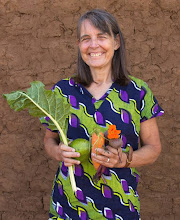Ten days ago I was working in a mobile clinic in a local neighbourhood in the “rubble zone” when the news first surfaced about a cholera outbreak about 60km. north of Port-au-Prince. Since then the “regular” routine of J/P HRO has been dramatically affected.
Cholera is a bacterial disease transmitted by the fecal-oral route. High population density areas such as refugee camps are especially vulnerable and the potential for cholera spreading to epidemic proportions rapidly is high unless control measures are taken. Cholera presents with sudden profuse painless watery stools, often accompanied by vomiting. Dehydration occurs rapidly and can be fatal if not quickly corrected. Clean water supplies and good hygiene (especially vigilant hand washing) are essential in control.
Under the leadership of JP’s Sean Penn (executive director) and Alastair Lamb (country director) there has been a very impressive proactive stance dealing with the possibility of a cholera epidemic hitting the Petionville Camp of 55,000 people. With the help of contracted staff and volunteers a cholera control strategy and cholera treatment center was established rapidly. “Prepare for the worst and hope for the best” has been exemplified to the fullest degree.
Last Saturday I was sent into the epicenter of the outbreak to the hospital in Saint-Marc’s with Lincoln Moore, JP’s Information Officer, nine workers and a translator. (I was the only woman and the oldest by a couple of decades.) Part of my role was to observe and learn from the set up in that hospital (which had been hit broadside with minimal warning of the outbreak), help oversee the training of the workers for cleaning and infection control, as well as report back to J/P with general and specific recommendations for the cholera control strategy.
We departed after dark on Saturday with Junior as driver/security guard at the wheel. Upon arrival at Saint-Marc’s we made contact with Partners in Health staff and worked out a plan for the morning's work to commence. Unfortunately there was no available accommodation anywhere and after some negotiations we managed to be horizontal in a hotel lobby for a few hours.
When we arrived after dawn at the hospital the scene was certainly something I have never witnessed. The mortality count was about 250 as of that morning. Outside in the hospital parking area and inside all the wards hundreds of people were on cots and on the floor/ground being cared for by family members (a 1:1 ratio). Many of those dead had no family. The sounds of retching and wailing pierced through the sweltering heat, as well as the smell of death and diarrhea (later bleach and burning medical waste was added to the mix). Bedpans were overflowing and flies abounded. Later I will have to write a full account of all the images which struck me that day.
After being trained by a MSF Water/Sanitation officer our cleaning crew (usually construction workers) set to work with their mops and buckets. They worked extremely hard in challenging conditions for 8 hours and received many accolades from the hospital administration. Precautions for their own safety were reinforced continuously. They have been there every day this week in force and have made a considerable contribution in controlling the spread of cholera.
The rest of the week I have been working at the JP clinic/hospital in triage and so far there have been no cases of cholera reported in the camp. Confirmed cases and one death have been reported in Port-au-Prince closer to the camp. Monday and Tuesday, November 1st and 2nd, is the traditional Haitian Day of the Dead celebrations. Due to the earthquake, this year’s gatherings will be extremely poignant and also presents the possibility of cholera spreading as people come from rural areas in the city. Security is especially high for the JP community. The fuse of a time bomb is burning.
Now there’s also another glitch on the horizon…Hurricane Tomas. How much more trauma and stress can this country bear?
Helen







